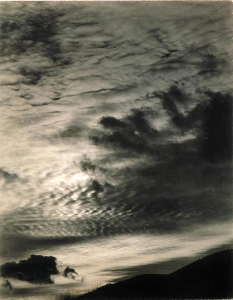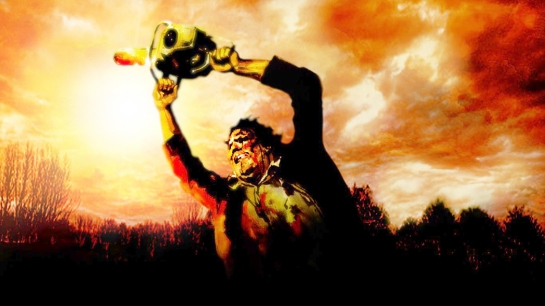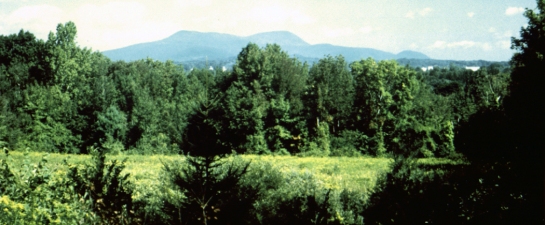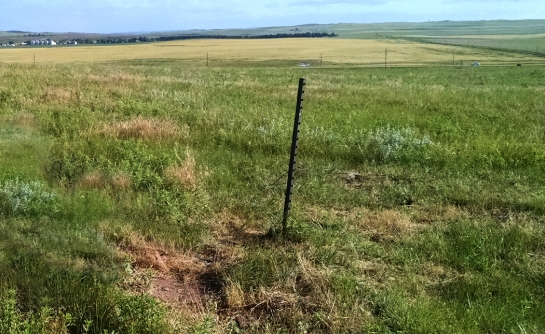If that sounds like bragging, well, it isn’t. Having a lot of facts in your fact-bag has very little to do with intelligence. I have always said that things stick in my memory because my brain is gummy. Real intelligence is something else.
Oh, I’m smart enough, but I’m no Stephen Pinker. The ability to retrieve a good deal of information is no more something to take credit for than having red hair or a cute button nose. These things were doled out at birth and a retentive memory is just like being dealt cerebral fly paper in the genetic lottery.
It is occasionally lots of fun: There was a time when my second unofficial wife ran a kind of scam, in which she would bet co-workers whether I would know some arcane fact — who was the first secretary general of the UN, for instance — and when I came to pick her up when she got off work, they would stand in a group and ask me the question. Then she would collect her money from everyone else and we would go home.
And even now, when age has made the retrieval of fact slower, it is still gratifying when my granddaughters come to me for help in history and I can give them a comprehensible overview of what they are studying. They call me “Encyclopedia Brown.”
As a side note, one should mention that when younger, this habit could be tiresome — creeping Cliff Clavinism you might call it. It’s surprising how few people desire to be corrected on factual matters that are incidental to the joke they are telling.
Worse, as you get older — age has nothing to do with it, per se, but rather the accumulation of experience, the widening of knowledge through reading and being corrected by the other Cliff Clavin’s of the world out there who know something you don’t — you discover that what once seemed to be a fact is in fact more subtle than you had imagined and that every supposed fact is really just a distillation of prevailing ignorance. As the Firesign Theatre once astutely had it: Everything you know is wrong.
At least, everything you know is more complicated than that. Just how many words for “snow” do Eskimos have? There are doctoral theses waiting to be written, not just on how many words, but on our fascination with the idea that Eskimos have this extended vocabulary.
And then there’s the issue of whether “Eskimo” is a decent word to use. And if we recognize the difference between Inuit and Yupik peoples, how many words do each of them have, and do these vocabularies overlap?
But before I got that deeply into snow — and avoiding the old traveling salesman joke — I meant to bring up something important to this flurry of factoid.
And that is the difference between what I call “fact confetti” and its corollary, the “tree of knowledge.”
As I remember history being taught to me in grade school, it was a pile of disconnected dates and places, battles and kings. We were supposed to remember these things for a test. 1492, 1066, 1620, 1776, 1848, 44 BC, 1939 — and these are just the obvious ones.  How about 1618 and the Defenestration of Prague and 1648 and the Treaty of Westphalia? (It is a matter of accounting to figure out just how many times the windows of Prague saw the ejection of undesirable political figures; it seems to have been a popular pastime in that city over the centuries, but the one in 1618 sparked off the Thirty Years War and is the one usually given the title.)
How about 1618 and the Defenestration of Prague and 1648 and the Treaty of Westphalia? (It is a matter of accounting to figure out just how many times the windows of Prague saw the ejection of undesirable political figures; it seems to have been a popular pastime in that city over the centuries, but the one in 1618 sparked off the Thirty Years War and is the one usually given the title.)
And that is just history. There were disconnected things to remember all through grade school, high school and into college. They filled out curricula for geometry, for chemistry, for drivers’ ed, even for art classes. Impressionism, Post-Impressionism, Cubism, Surrealism — we were taught these hiccups of isms, as if they were independently meaningful and discrete.
This is fact confetti, thrown at you like your teacher was Rip Taylor.
I don’t know how anyone should be expected to remember such things, especially when you are young, pimply and lusting after the Betty Ann Rosensteins of the world in their teardrop eyeglasses and braces. Who cared about Ferdinand Magellan or the Holy Roman Empire? This emphasis on the accumulation of fact confetti turned many a young man and woman off of the whole idea of school-learning.
But, you realize, these facts are not discrete, but connected. In fact — so to speak — everything is connected. If you learn the connections, the facts hang there like ripe fruit, ready to be collected. If you have, instead of just dates and places, the central ideas, the basic flow, you can remember that and the facts fall naturally into place.
This is the tree of knowledge — the overriding shape of your subject. If you know the general lines of how revolutions play out, then whether you are seeing the French or Russian versions, you have a template for the expected facts to flop into place. You remember one thing instead of a hundred of them.
It is the bigger ideas that should be taught, not the fact confetti. But how often does this play out in the classroom? Perhaps it has all changed since my time in Charles De Wolf Elementary Purgatory, but I doubt it.
As I have come to know it, there can even be said to be a single Tree of Knowledge, an Yggdrasil of everything, which splits into world-bearing branches we call science, history, art, language, mathematics. This “World Ash Tree” is the axis mundi of all human learning, and in some way is a map of the human mind — mirroring the way we understand. As Andrew Marvell has it, “that ocean where each kind/ Does straight its own resemblance find.” It is the carrefour where the Umwelt meets incoming experience, creating “far other worlds, and other seas.”
This tree is a life-long exercise of horticulture, you plant it young and watch it grow, spreading tendrils and leaves out to the furthest reaches of esoteric knowledge. All the information, all the contradictions and varieties spread out before you. When seen this way you become not arrogant in knowledge, but humble before the immensity of it all. You can never climb the whole tree, but live on this or that branch, seeing the rest of the tree spread out to a rosy-fingered east you can never reach in a single lifetime.
How do you plant the seed for this Tree of Knowledge, unforbidden by any Nobodaddy?
For me, it began with children’s books. The simple knowledge found in a book for children, or for adolescents, gives you all the hooks you need to hang the facts on. As you learn more and more, delve deeper into the subjects and take up first the adult books on the subject and later, the scholarly books, you come to discover that much of what you first learned was wrong, or at least simplified to the degree it was distorted, but the basic outline you got from that early book gave you the shape of the knowledge, and you could unhook one bit of questionable data and replace it with the more sophisticated version. But if you were to dive immediately into the Ph.D. version, you will become instantly lost.
 Even as an adult, when I want to learn something in a new field, I will seek out the simplest, most basic or synoptic version of it, knowing full well that much of what I read will turn out to be untrue, or at least undependable. Yet, the basic shape of the knowledge will remain.
Even as an adult, when I want to learn something in a new field, I will seek out the simplest, most basic or synoptic version of it, knowing full well that much of what I read will turn out to be untrue, or at least undependable. Yet, the basic shape of the knowledge will remain.
This was the gift of such things as the Little Golden Guides of Herbert S. Zim, or the “All About” series of children’s books on dinosaurs or whales. You begin with the simplest learning and build on it — or rather, let it grow from seedling into mighty oak. Parvis e glandibus sapientia.
But it’s not just children’s books: Anything that gives you an overview, like the Durant “History of Civilization” series, all leventy-thousand pages of it. Or Harold Schonberg’s “Lives of the Great Composers,” or Butler’s “Lives of the Saints.” Each is filled with shorthands, even outright errors and sometimes mere fabrications. But it gets you in the door. You begin with Parson Weems and the cherry tree and move on to Marvin Kitman and the expense account.
You can even start with a Hollywood blockbuster. If Peter Ustinov as Emperor Nero gets you into Suetonius or Tacitus, all to the good. I know as a kid, I went from “Cat Women of the Moon” to books by Willy Ley and on to Sir James Jeans (I’m afraid already out of date in 1957) and then a telescope and the Norton Star Atlas. These things all build on one another and inform one another.
More important is the web of interrelations that spreads out from a single entry point.  The astronomy of my boyhood opened to the Greek mythology of the constellations, the gold of astronomer Tycho Brahe’s artificial nose (now thought to have been brass instead) and thence to the Periodic Table of Elements, and the strange obsession with gold by the Spanish explorers, the rise of Medieval Islam and its science, the prosecution of Galileo by the Vatican, and thence to the Papal States and the political disunity of Renaissance Italy, the difference between classical and Medieval Latin … and on and on, one thing leading to another. It is all connected. Very like clicking a link in an internet story — although with this signal difference, that I finished the one book before “clicking” on the next.
The astronomy of my boyhood opened to the Greek mythology of the constellations, the gold of astronomer Tycho Brahe’s artificial nose (now thought to have been brass instead) and thence to the Periodic Table of Elements, and the strange obsession with gold by the Spanish explorers, the rise of Medieval Islam and its science, the prosecution of Galileo by the Vatican, and thence to the Papal States and the political disunity of Renaissance Italy, the difference between classical and Medieval Latin … and on and on, one thing leading to another. It is all connected. Very like clicking a link in an internet story — although with this signal difference, that I finished the one book before “clicking” on the next.
And each of these excursions tended to illuminate the others: If you follow the general patterns of Renaissance thought and art into the Baroque and then to the 18th and the Romanticism of the 19th, you can see find the same differences in type design from humanist to old style Caslon to the so-called new style Bodoni,  and see the same impulses. You can see them in politics, philosophy, in clothing, in historiography, in religion, and even in cookbooks. Knowledge in one area helps to comprehend another. If you were given a few uncredited lines of Shakespeare, Milton, Pope, Blake, T.S. Eliot and Derek Walcott, you could arrange them chronologically by their styles: Renaissance, Baroque, 18th Century, Romantic, Modernist and Postmodernist.
and see the same impulses. You can see them in politics, philosophy, in clothing, in historiography, in religion, and even in cookbooks. Knowledge in one area helps to comprehend another. If you were given a few uncredited lines of Shakespeare, Milton, Pope, Blake, T.S. Eliot and Derek Walcott, you could arrange them chronologically by their styles: Renaissance, Baroque, 18th Century, Romantic, Modernist and Postmodernist.
Remembering dates has always seemed beside the point; recognizing correspondences is so much more meaningful. As Albert Einstein supposedly said, “If I need a fact, I can look it up.”





































































